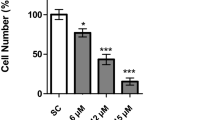Abstract
Single non-lethal doses (3 mmol/kg) of chloroform (CHCl3), dichlorobromomethane (CHCl2Br), dibromochloromethane (CHClBr2), and bromoform (CHBr3) were administered by intraperitoneal injection to male Sprague-Dawley rats and proximal tubular secretion and reabsorption was assessed at varied times following treatment. Each of the trihalomethanes (THMs) at this dose inhibited proximal tubular secretion, as indicated by decreased in vitro renal cortical slice accumulation of organic anion p-aminohippuric acid (14C PAH). The time of maximal THM interference with 14C PAH uptake occurred at 8 h, with recovery being demonstrated by 48 h. Each of the THMs also demonstrated interference with tubular reabsorption, as assessed by urinary glucose excretion, with maximal interference occurring during the first day post-treatment and recovery being observed during the second day post-treatment. In each case, CHCl2Br was the most potent inhibitor of proximal tubular function. Combining these data with those of the preceding paper, the relative potency in disrupting renal function was, in general, CHCl2Br>CHCl3>CHClBr2>CHBr3. Since the time course of this investigation indicates that proximal tubular dysfunction precedes other THM-induced renal function interferences, it also appears that proximal tubular damage is the primary event leading to further manifestations of renal dysfunction.
Similar content being viewed by others
References
Adin A, Katzhendler J, Alkaslassy D, Ravacha C (1991) Trihalomethane formation in chlorinated drinking water—a kinetic model. Water Res 25:797–805
Bellar TA, Lichtenberg J, Kroner R (1974) The occurrence of organohalides in chlorinated drinking water. J Am Water Works Assoc 66:703–706
Bowman FJ, Borzelleca J, Munson AE (1978) The toxicity of some halomethanes in mice. Toxicol Appl Pharmacol 44:213–215
Feteris WA (1965) A serum glucose method without protein precipitation. Am J Med Technol 31:17–22
Hook JB, Hewitt W (1986) Toxic responses of the kidney. In: Amdur MO, Doull J, Klaassen CD (eds) Caserett & Doull's Toxicology. Macmillan, NY
Kroll RB, Robinson GD, Chung JH (1994) Characterization of trihalomethane (THM)-induced renal dysfunction in the rat. I: Effects of THM on glomerular filtration and renal concentrating ability. Arch Environ Contam Toxicol 27:1–4
Munson AE, Sain L, Sanders V, Kauffman B, White Jr. K, Page K, Barnes D, Borzelleca J (1982) Toxicology of organic drinking water contaminants: Trichloromethane, bromodichloromethane, dibromochloromethane, and tribromomethane. Environ Health Perspect 46:117–126
Plaa GL, Larson R (1965) Relative nephrotoxic properties of chlorinated methane, ethane, and ethylene derivatives in mice. Toxicol Appl Pharmacol 7:37–44
Rush GF, Smith J, Newton J, Hook J, (1984) Chemically induced nephrotoxicity: Role of metabolic activation. CRC Crit Rev Toxicol 13:99–160
Stevens AA, Slocum C, Seeger D, Robeck G (1976) Chlorination of organics in drinking water. In: Water chlorination, environmental impact and health effects. Ann Arbor Sci, Ann Arbor, MI, Vol 1
Watrous WM, Plaa GL (1972) Effect of halogenated hydrocarbons on organic ion accumulation by renal cortical slices of rats and mice. Toxicol Appl Pharmacol 22:528–543
Author information
Authors and Affiliations
Rights and permissions
About this article
Cite this article
Kroll, R.B., Robinson, G.D. & Chung, J.H. Characterization of trihalomethane (THM)-induced renal dysfunction in the rat. II: Relative potency of THMs in promoting renal dysfunction. Arch. Environ. Contam. Toxicol. 27, 5–7 (1994). https://doi.org/10.1007/BF00203879
Received:
Revised:
Issue Date:
DOI: https://doi.org/10.1007/BF00203879




